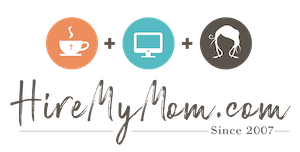Signs It’s Time to Hire Remote Help (Even If You’re Not Ready)

Small business owners try to wear every hat which can quickly become overwhelming. The problem isn’t passion, it’s capacity. Knowing when to hire remote help is less about feeling ready and more about recognizing measurable signs your business has outgrown your current bandwidth. Here’s how to know it’s time to hire a virtual assistant or remote support backed by data, not guesswork.
1. The Operational Lag
If you’ve noticed your work hours increase without a proportional rise in revenue, your efficiency ratio has already slipped. A healthy small business should maintain at least a 1:3 ratio of admin time to production time. Once you cross the 40% mark and you are spending nearly half your week on emails, scheduling, invoicing, and logistics, your output curve flattens. That means you’re stuck doing small tasks instead of bringing in new clients.
Another signal is delayed client responses. A consistent 48+ hour lag in replies or quotes can increase customer churn risk by up to 15%. That’s a huge bandwidth issue. When your calendar fills with tasks that don’t directly drive profit, it’s time to delegate. Remote help isn’t a luxury, it’s an efficiency reset.
2. Process Saturation
Even the best automation has a breaking point. If your CRM, inbox, or project tools are maxed out, you’ve hit process saturation.
Ask yourself:
- Are you sitting on 100 or more unread actionable emails?
- Are there more than 20 open tasks in your project tracker every week?
- Are deliverables slipping twice a month or more?
If yes, your systems have exceeded the threshold of what one person can sustain. A skilled remote assistant that is trained in task automation, CRM management, or digital workflow optimization can restore structure instantly. In many cases, a part-time virtual assistant at 10 hours per week can reduce operational drag by a good percentage, allowing your business to expand.
3. Delegation Economics
The question isn’t whether you can afford help, it’s whether you can afford the inefficiency.
Here’s a simple formula: take your hourly value and divide it by the hourly rate of the task you’re doing. If that number is three or more, you’re losing money by keeping the task yourself.
For example, if you bill $125 per hour and spend six hours a week scheduling social posts, that’s $3,000 of lost value per month. Hiring a remote marketing assistant at $25 per hour would cost just $600 for the same work which is a huge efficiency gain.
When that inefficiency index exceeds three times your rate, the economics clearly justify outsourcing. And it’s more affordable than many realize. Flexible hiring platforms like HireMyMom allow you to post remote jobs affordably, connecting you with experienced stay-at-home moms who can handle admin, bookkeeping, or client coordination on a flexible, part-time basis.
4. Strategic Paralysis
Time tracking tools can expose the biggest blind spot in small business leadership: the ratio of time spent on operations versus strategy.
If 70% or more of your week is consumed by operations, you’re deep in the red zone. A 50/50 split represents growth potential, while a 30/70 balance between operations and strategy is where leaders thrive.
When your operational load sits above 60%, you’re functioning as your own middle manager. This imbalance suppresses scalability because strategic work with planning, partnerships, and vision requires deep cognitive space, not leftover minutes.
5. Decision Fatigue and Cognitive Load as Performance Data
According to Medium, decision fatigue erodes business performance because leaders are so overwhelmed they resort to simple decisions or avoid making them altogether, leading to issues in the business. When you make hundreds of micro-decisions a day, accuracy and creativity decline sharply after just a few hours of continuous work.
If you’re missing follow-ups, rechecking invoices, or spending too long rewriting emails, that’s not disorganization, it’s cognitive overload. Hiring a virtual assistant to manage your inbox or client updates acts as a cognitive offload mechanism, allowing your brain to operate in high-value zones again.
6. Process Mapping
Hiring help starts with a task audit. Write out everything you do in a typical week and divide it into three categories:
- Keep: High-value, strategic tasks that only you can do like client strategy, sales calls, or business development.
- Delegate: Repetitive, time-consuming tasks such as scheduling, invoicing, or responding to standard client emails.
- Automate: Low-skill, high-frequency actions like data entry, reporting, or social posting that software can handle.
For example, a service-based business can delegate CRM updates, appointment scheduling, and invoice management. An e-commerce brand can outsource order processing, customer service, and returns coordination.
Document these recurring tasks with quick Loom videos or written instructions in Notion or Google Docs. Clear instructions and repeatable workflows make remote onboarding nearly frictionless.
7. Deconstructing “I’m Not Ready Yet”
Three resistance points stall small business owners from scaling through remote help.
First, “I can’t afford it.” Run the math again. If a $25 per hour assistant gives you back ten hours at your $100 per hour rate, you’ve created $750 in net value.
Second, “I don’t have time to train someone.” Record your processes once with a screen-share tool. Every new hire after that can self-train using those materials.
Third, “No one can do it as well as I can.” Then document your methods. Turning instinct into process is what allows your business to grow beyond you.
Start with a small commitment, such as a five-hour-per-week remote trial. Our platforms at HireMyMom make it easy to hire moms to work from home who already understand the pace and communication needs of small business owners. They bring both reliability and flexibility which is the exact balance most startups need to stabilize.
8. Quantifying the Turnaround
After consistent remote support, small businesses typically report measurable improvements:
- Client response times drop by 25%.
- Owner working hours fall by 15%.
- Weekly deliverables increase by 30%.
- Stress levels decline noticeably.
These results reflect tangible operational lift. And most owners who thought they “weren’t ready” realize the real risk was waiting too long.
Hiring remote help is about reclaiming strategic control. Whether it’s a virtual assistant, project coordinator, or part-time marketing manager, bringing in remote support transforms your time from reactive to revenue-generating.
If your systems are overloaded, your schedule maxed, and your growth stalled, the data is already telling you: it’s time.
Start small. Delegate one area. Use HireMyMom to find vetted, flexible professionals who can help you scale sustainably.


